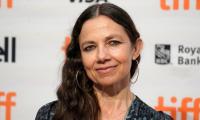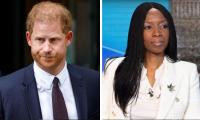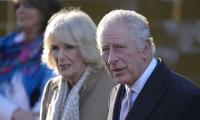Initially, Brazil, Russia, India and China in 2006 formed BRICS as a relatively informal grouping of rapidly growing countries seeking to improve the global economic situation and reform international financial institutions.
Later, South Africa joined the group in 2010 and thus assumed its current name: BRICS. The acronym ‘BRICS’ was first coined by Jim O'Neill in 2001 when he was chief economist of the multinational investment bank, Goldman Sachs.
The BRICS countries were growing at a rapid pace at that time and hoped to achieve sustainable economic development, high GDP growth and higher living standards. Since its formation, BRICS has been able to maintain a higher and sustainable economic growth rate.
BRICS has become an important international economic, political and diplomatic forum. China is the real driving force behind this block. The rise of BRICS and its east- and southward expansion poses a serious challenge to the American denominated economic order. BRICS has emerged as a powerful force in the global economy, with the potential to significantly change the current world order.
The Chinese leadership wants to expand this block with the inclusion of new members. All the decisions of BRICS are made at an annual summit with consensus of all five members. This year’s summit will take place in South Africa in August and many important decisions will likely be made, including the decision to expand BRICS and to launch a new currency to settle international trade. China, South Africa and Russia want to expand BRICS and take other decisions on trade and currency immediately, but India and Brazil have adopted a much cautious approach. It is likely that BRICS will finalize the criteria for new members.
Russian Deputy Foreign Minister Sergey Ryabkov told Russian state-run TASS news agency in June that more than 20 countries want to join BRICS. An increasing number of states are seeking cooperation with BRICS.
“Discussions continue on what could be the criteria for joining BRICS, and South Africa has intensified this work,” he said, adding that an in-depth conversation on this subject took place at a meeting of BRICS foreign ministers in Cape Town in early June and that additional contacts are expected to take place before the summit of BRICS leaders in August.
A major step forward for BRICS was the formation of the New Development Bank headquartered in Shanghai with capital of $50 billion. The purpose of the bank is to provide finance to promote infrastructure and sustainable development projects in the developing world. The BRICS bank is open to new members. In 2021, Egypt, the UAE, Uruguay, and Bangladesh took up shares. However, these were much lower than the respective $10 billion investments made by the bank’s founding members.
Although BRICS has been slow in establishing itself, it appears to be on the brink of rapid growth with scores of developing countries expressing an interest in joining the bloc. Nearly 30 countries have shown their interest in joining BRICS. Nine countries – including Algeria, Argentina, Bahrain, Egypt, Indonesia, Iran, Saudi Arabia, and the UAE – have formally applied to join the BRICS alliance. The other nations have only expressed their interest in joining the BRICS bloc.
If this happens, the BRICS grouping will become the most important economic and geopolitical bloc in the world. Already, it is significantly bigger than the G7 on most metrics, representing 42 per cent of the world’s population compared to only 10 per cent in the G7. Similarly, BRICS has overtaken the G7 in economic weight with 32 per cent of global GDP compared to 30 per cent in the G7. Even without additional members, BRICS is forecast to account for 50 per cent of world GDP by the end of this decade.
One of the key factors to have sped up the move to expand BRICS has been the growing use of economic sanctions by the US and its allies against many developing countries. Resistance to this abuse of US economic power has only been accelerated by the war in Ukraine. Many developing countries have refused to implement the Western sanctions against Russia.
There is now a growing desire by most countries to break free from the domination of the dollar. To that end, a key proposal now being discussed by BRICS members is for an end to the US dollar’s position as the world’s reserve currency. Steps towards this are already taking place as BRICS members and those wanting to join have begun to abandon the dollar and trade in their own currencies. A more ambitious proposal to create a new BRICS currency that could act as an alternative reserve currency is being seriously discussed.
Simultaneously, there is widespread support for the creation of an alternative to the SWIFT system used for bank transfers. The decision to exclude Russia from the system has politicized it while Russia’s ability to develop an alternative to it has encouraged the move to abandon it altogether. Russia has largely replaced American cards like VISA and MasterCard with its own MIR card, while the card issued by Chinese state-owned Union Pay recently surpassed Visa to become the world No 1 debit card for transactions – accounting for 40 per cent of the global total.
A key aim of an expanded BRICS would be to greatly increase fair trade between developing countries rather than with neo-imperialist countries which traditionally use their dominance to secure unfair super-exploitative contracts.
A current example of this is China’s policy of increasing corn imports from BRICS countries in an attempt to reduce its dependence on US grains. But these are early days in the development of BRICS.
It will be interesting to see how much trade develops between BRICS members as their number accelerates over the coming years. In this way, we will see if a parallel and less exploitative economic model develops within the BRICS system.
The writer is a freelance journalist.
Critics argue that strategy is vague, but closer look indicates strategic alignment with global trends and national...
To defeat it, we must distrust bot-driven narratives, to defeat it, we must verify sources before believing or sharing
Too often in emerging markets, digital innovation is treated as standalone goal, with risk relegated to afterthought
As in Pakistan lawfare’s impact and prevalence are increasing, situation is turning murkier
Number of traditions are associated with Eid, such as new clothes and giving and receiving of cash gifts as Eidi
Internationally, there have been misleading theories propounded about so-called slowing of Chinese economy







